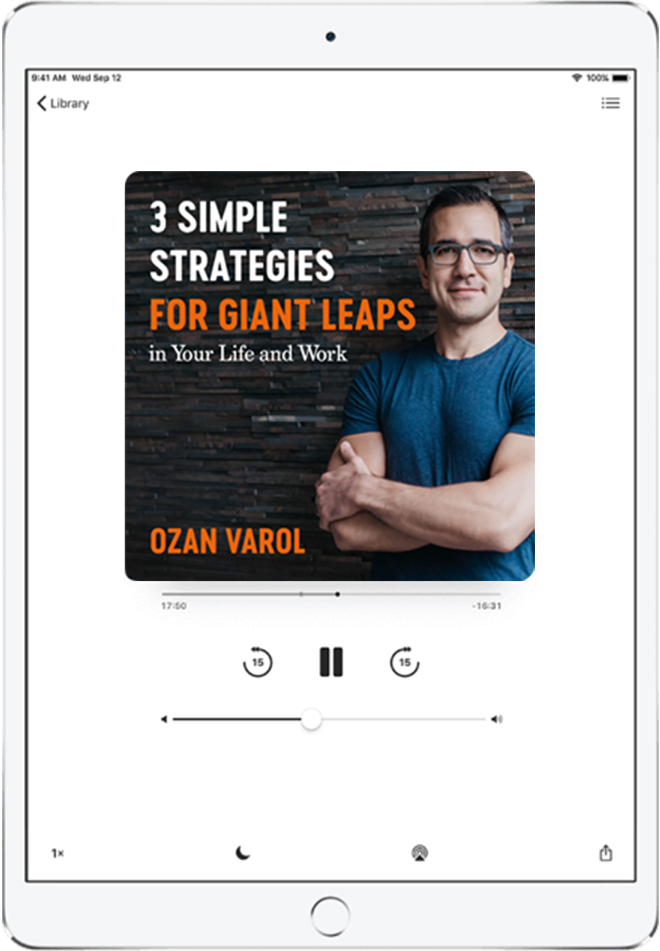You adopted an adorable new puppy, but there’s a slight problem.
Your new puppy has a lust for shoes. He believes your brand new sneakers are the best chew toy ever created, so he rips them to shreds.
What would you do?
If you’re like most people, you’d try to teach the puppy to not chew on shoes. Every time he goes over to your shoes and returns without chewing them, the puppy would get a treat.
But if your puppy is anything like our dog Einstein, he’ll stop chewing on shoes when he knows you’ve got a treat in your hand—and go back to business as usual the moment the treats disappear.
Your puppy ends up training you, rather than the other way around.
There’s a far easier remedy. Instead of doggedly trying to teach your puppy to not chew on shoes, you can simply move your shoes to a place where the puppy can’t reach them.
In other words, what looks like a behavior problem is actually an environment problem.
The same idea applies to human behavior. Consider a research study of moviegoers in Philadelphia. After entering the theater, they were given a bucket of free popcorn and asked to answer some questions following the movie. The size of the popcorn bucket varied: Some participants got a medium bucket of popcorn whereas others were handed a large bucket.
The researchers wanted to know: Did people eat more popcorn when they were given a large bucket?
There was an additional twist that wasn’t immediately apparent to the moviegoers who picked up the popcorn on the way to their seats. Some of them got fresh popcorn, whereas others got popcorn that was 14 days old. The popcorn was so stale that it squeaked when they chewed on it.
The results were striking. The moviegoers who got fresh popcorn in large buckets ate 45.3% more than those given fresh popcorn in a medium bucket. That’s a striking jump, but another fact is more striking: Even when the popcorn was wretchedly stale, people with big buckets still ate 33.6% more.
The takeaway is simple. If you’re trying to lose weight, you can try to change your behavior so you eat less. Or you can modify your environment. Throw away those giant plates you got on sale at Target and replace them with medium ones.
If you’re a government official trying to get people to compost, you can fight the losing battle of educating them about the benefits of composting. Or you can tweak their environment, as the trash pick-up service in our Portland neighborhood did. They decided to: (1) pick up waste once every two weeks, but pick up the compost every week and (2) make the bin for the compost twice the size of the bin for waste. Combined, these two environmental changes are far more effective in getting people to compost than an educational campaign.
I apply the same principle to my writing process. If I’m typing an article on a computer with internet access, and with my smartphone within arm’s reach, I’m bound to get distracted by 100-decibel notifications screaming for attention.
Instead of “training” myself to avoid distractions, I change my environment. I write the first drafts of many articles the old-fashioned way—with a pen and paper. When I’m typing the draft into a computer, I use a functionally limited Chromebook that I bought for the sole purpose of writing—that computer is off limits for emailing, researching, and other similarly distracting extracurricular activities. When I’m writing, my smartphone is sitting downstairs in our living room—on airplane mode, for good measure.
Whether the behavior is of your puppy or your own, the principle is the same.
To change the behavior, change the environment.
[Inspiration: Chip & Dan Heath, Switch].
P.S. If you liked this article, I’m confident you’ll love my forthcoming book, Think Like a Rocket Scientist.
I’ve been ecstatic about the early reviews. The book was named a “must read” by Susan Cain (NYT Bestselling Author of Quiet), “endlessly fascinating” by Daniel Pink (NYT Bestselling Author of Drive and A Whole New Mind), and “bursting with practical insights” by Adam Grant (NYT Bestselling Author of Originals). The book was also selected by Adam Grant as his # 1 pick among his top 20 books of 2020.
If you haven’t pre-ordered the book yet, you can get digital access to it within seven days of your pre-order (Amazon, Barnes & Noble, and IndieBound). That means you can start reading it NOW, months before the book is published.
After you pre-order the book, please send your receipt to [email protected]. You’ll also get pre-order bonuses worth at least 10 times the cost of the book. You can head over to this link to learn more: rocketsciencebook.com.




